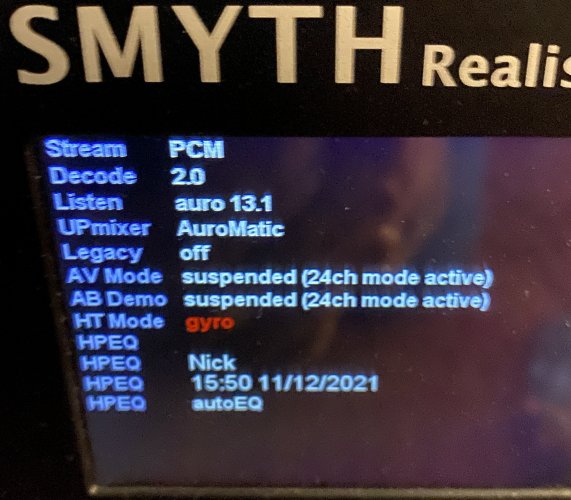Sanctuary
500+ Head-Fier
- Joined
- Jun 19, 2011
- Posts
- 563
- Likes
- 202
PS... While the headphones are wireless... they are less than ideal sounding. They also tend to creak with the slightest head movements. I prefer to use the HD800s or my IEMs with the machine.
That's putting it mildly.

They're decent enough to show off what the unit can do, and they can be used in conjunction with a wired pair for two-person simultaneous use (should that need ever arise), but I would never recommend them. They end up being very uncomfortable after about an hour, and they are very finicky with keeping a signal. They really demand a direct, non-interrupted line of sight, or you will get frequent drop outs. Mine have been in storage for over a decade now.
Would highly recommend using your own wired headphones, and if they are normally harder to drive headphones, you'll also want to use an external amp (using the headphone jack of the box). While you can technically get away from amping harder to drive headphones, you can clearly hear the difference when it struggles to adequately power them without one. It powers my DT1990s 250 Ohms without any problems however.
This box is in no way, shape or form a replacement for what the A8 and A16 can do, but even while having a working A16, I still use it daily anyway (been using it since around 2011).
What the A16 does, it does extremely well, but sometimes it does it too well for me. Similarly to how the HD800s work, the A16 can be super revealing, which means it doesn't "play nice" with lower quality content. I watch a lot of streaming shows, many of which are 5.1 anyway, and I find the A16 to be overkill, and sometimes it actively makes the lower bitrate audio very unpleasant to listen to. The Pioneer box tends to cover up many of the imperfections while still giving a really good out of head experience. Well, using semi-open, or open headphones at least. I've tried with IEMs and closed-back and find the effect to be severely muted. But I also don't use the box for music listening either, so YMMV.
It can decode Dolby Digital and DTS, but it's source dependent. If you want to use it with a TV, some TVs will pass that audio just fine, but they might require a specific optical setting to pass the signal. Some will work with "Auto", while some might require passthrough if they have it. Sometimes Auto might work, but then if you switch apps/channels it might stop working and only show up as Pro Logic II. Simply toggling the optical option of your TV should reset it. For mine, I just leave it set to passthrough.
It can also be used with the consoles that still have an optical out.
















 . Thanks nonetheless, I'll keep an eye open for another cheap pair in the future. For the price, it's worth getting just to play with (although, I agree, not with the Pioneer HP).
. Thanks nonetheless, I'll keep an eye open for another cheap pair in the future. For the price, it's worth getting just to play with (although, I agree, not with the Pioneer HP).